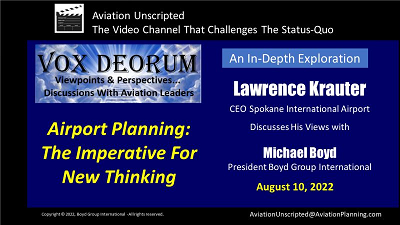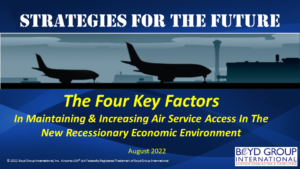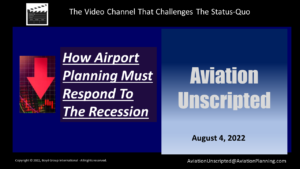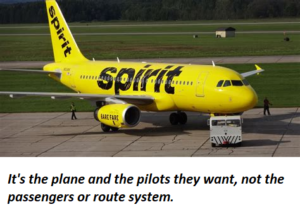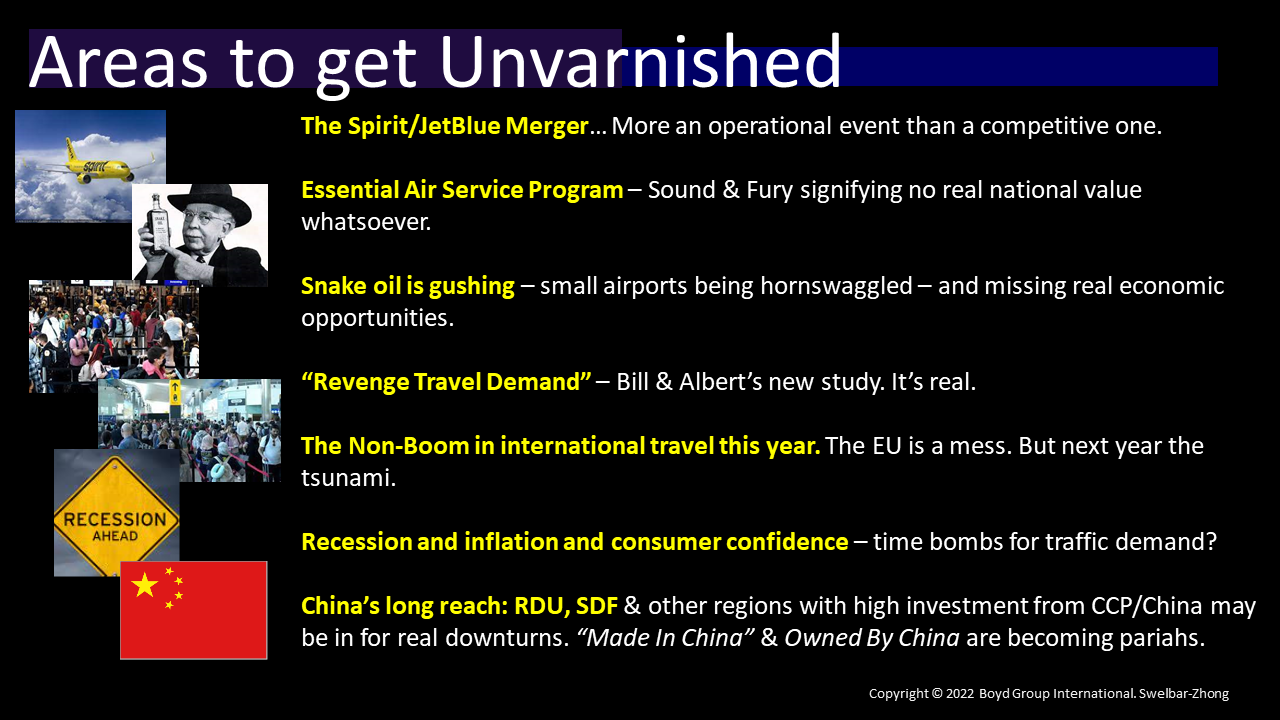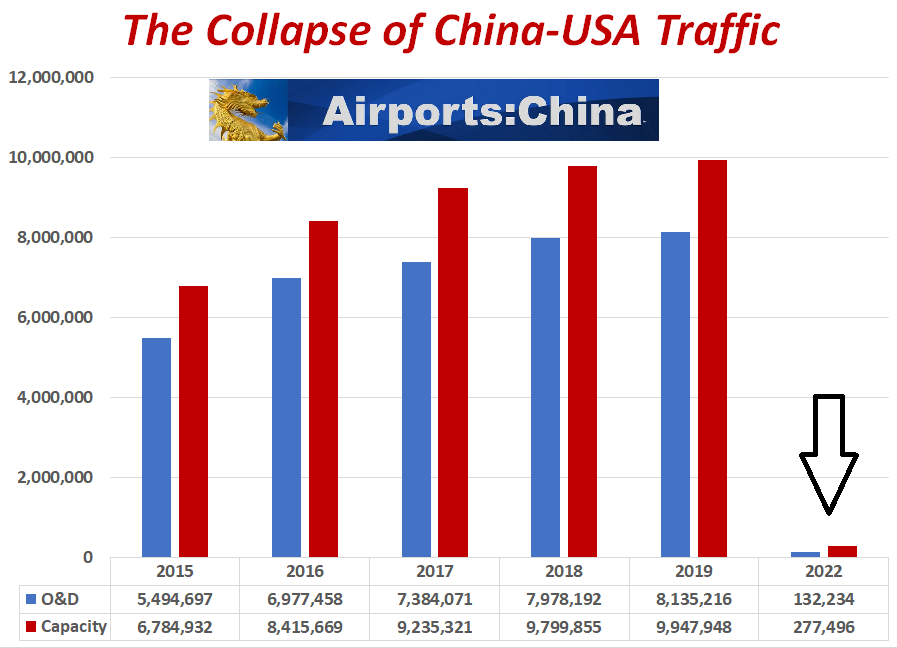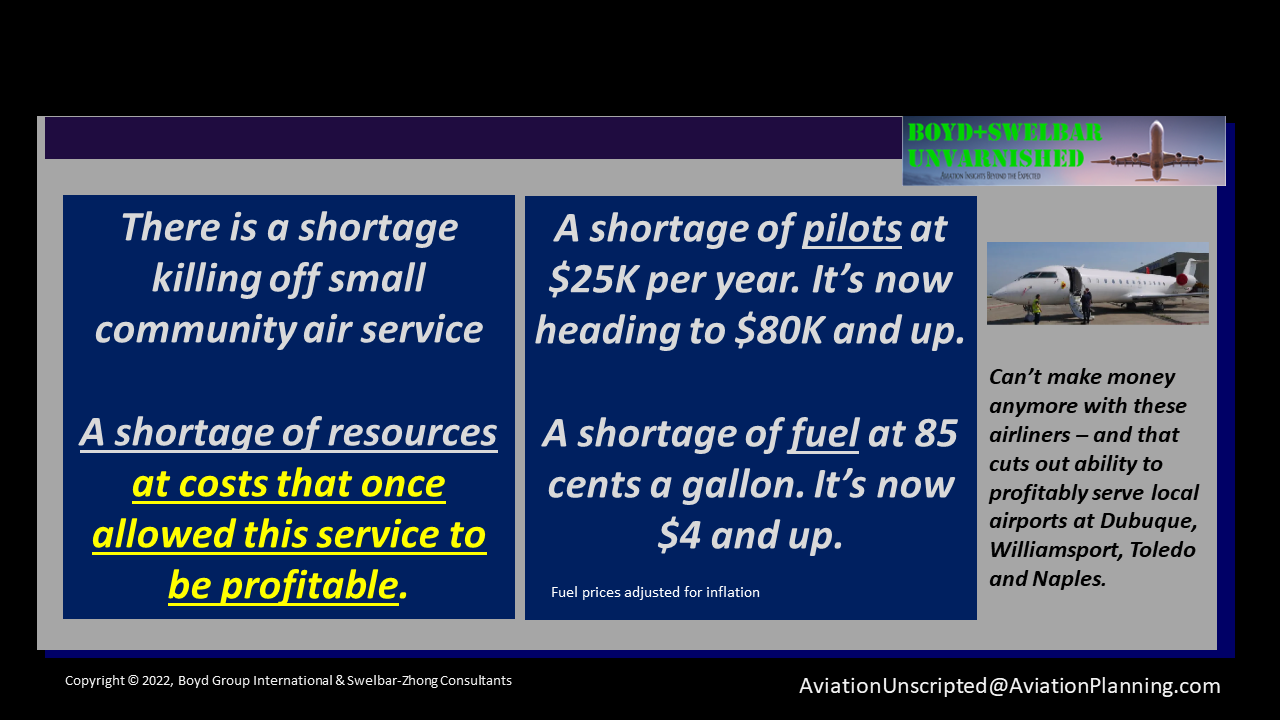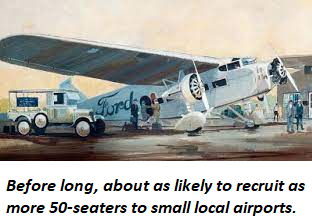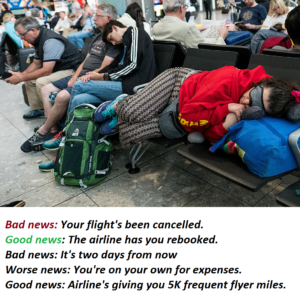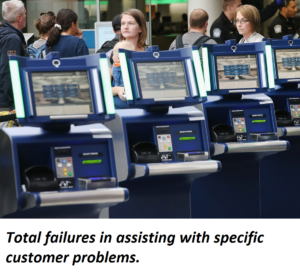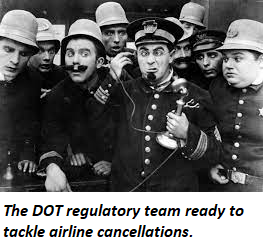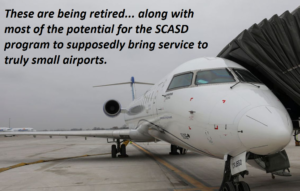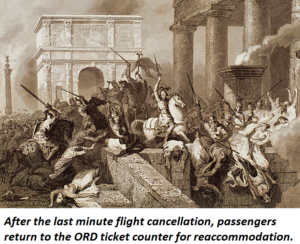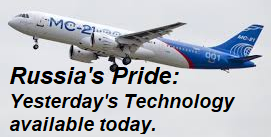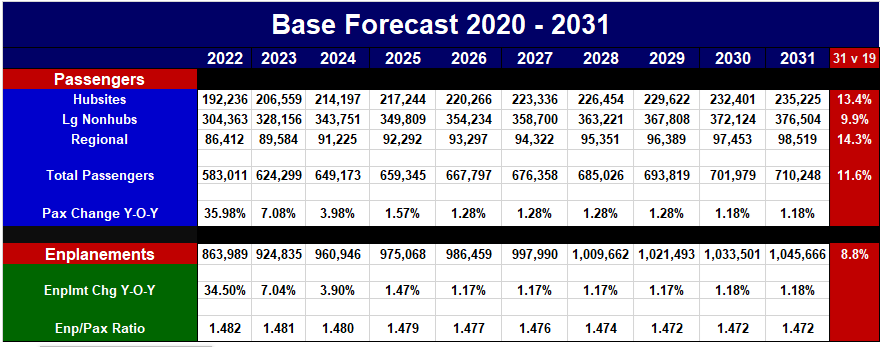Before We Start With This Week’s Insight –
The latest Aviation Unscripted video is now on line. This edition is a Vox Deorum airport planning discussion with Lawrence Krauter, CEO of Spokane International Airport.
– How traditional passenger forecast methodologies are now completely obsolete.
– Why traditional air service development “market studies” and “leakage analyses” are based on metrics that no longer apply to the new air transportation system.
– Geographic and demographic changes are taking place in regard to air traffic demand. Past O&D data are not reflective of the future.
– How programs such as EAS and the Small Community Air Service Development grant program are focused on recreating the past, instead of building for the future.
– The need to implement programs to encourage economic growth at small airports, instead of just trying to attract air service that generally is consumer-obsolescent.
– The enormous opportunities open to small and rural airports in both economic recruitment and the expansion of rapid-delivery logistics.
Larry Krauter and Mike Boyd tackle issues that need to be openly put on the future planning table – issues that often run counter to traditional thinking.
Click here & take the time for this nonstop dive into areas that need to be explored but are usually drowned out by consensus thinking.
And Later This Week…
The latest Boyd-Swelbar Unvarnished video will come on line – and as usual we take no prisoners.
 We’re talking about the changes in airline strategies… whether the recession will really affect air traffic demand… where we see changes in consumer patterns… and a lot of other incisive and iconoclastic assaults on the status-quo.
We’re talking about the changes in airline strategies… whether the recession will really affect air traffic demand… where we see changes in consumer patterns… and a lot of other incisive and iconoclastic assaults on the status-quo.
Ready this Thursday… Check out our channel.
___________________
Airline Customer Service Shortfalls:
The DOT Camel Just Stuck His Nose In The Tent
In any situation, it’s a leadpipe cinch that whenever politicians get involved, it’s not good for business or the customer.
In the airline industry, it is management’s responsibility to assure that what the customer experiences does not set off a nationwide jihad. Otherwise, everybody loses with the injection of usually irresponsible trendy and woke nonsense from the appointees in Washington.
In the past week, there was yet another milestone in the evolving post-CCP-pandemic airline industry.
The DOT issued a Notice of Proposed Rule Making that, shock! shock! largely makes solid sense. The shame is that the airline industry should not have let things get to that point.
Abusing The Situation. The flying public, by the nature of air transportation, is essentially and literally trapped. They have to follow rules for safety. They also have to follow the airline’s specific customer service rules. It’s a delicate line to walk between assuring safety and not making passengers feel that they’ve just entered a minimum-security prison.
Unfortunately, customer service policies have degenerated from making the air travel experience easier and more comfortable to instead assuring that revenues are maximized. Fare rules, fees, adding confusing no-frills fares, etc.
Customers don’t have much recourse, and the result can be demands for outside intervention. And when it’s intervention from the DOT, that’s not good. But it’s really not good when what the DOT is suggesting are things that are reasonable and which the industry has failed to address.
Post-CCP-Covid: Brilliant Operational Planning. Customer Relations, A Lot Less So. The events over the past two years have done just that. It is clear that the airline industry has been brilliant and innovative in getting through the worst crisis since Wilbur & Orville. But at the same time, they failed to aggressively adjust customer service policies and procedures to accommodate the chaos and confusion naturally attendant to what the pandemic did to the business.
Complaints up wildly. News stories of klutzy airline responses to service failures. The expected life forms in congress and at “consumer” organizations calling for regulation and revenge and other poorly-researched but very trendy solutions.
So, now the DOT has issued a 70+ page NPRM covering a wide range of fallout from the past months of airport chaos, cancellations, delays and other fun things. The main impetus has been how airlines have handled consumers due to the changes wrought by reaction and regulatory responses due to the gift that keeps on giving, the CCP-induced Wuhan pandemic.
Post Covid Refunds: Like Arguing Over The Bar Bill On The Hindenburg. As the travel market collapsed in early 2020, there was a massive Martian fire drill because of confused determinations regarding “voluntary” passenger booking cancellations due to fear of infection v those that were the result of plunging traffic and airline-determined flight cancellations.
It was not the airline industry’s proudest period. We were in a near-panic epidemic, and when consumers were afraid to travel, that was not the time to whip out and lecture them on the Contract of Carriage. But that’s what pretty much happened in too many cases.
Stories abounded regarding real, imagined and – indeed – concocted decision outrages by airlines in regard to refunds. In the midst of a near-total shutdown of the air transportation system, there were far too many media stories of consumers getting the “gotcha” treatment, with some airlines splitting hairs between whether the refund was due or not, when flight schedules were being slashed – often at the last minute – to almost nothing, anyway.
Now fast forward to the last six months. The pilot shortage and other factors have resulted in cancellations, both well in advance of flight date, and also right up to post-boarding. This led to the traditional voucher offer – where instead of cash refunds due to failure to operate, the grand alternative was giving the affected consumer the promise of the value to be applied to a future flight. Oh, yeah, and a lot of them had expiration dates. This was in place before the CCP-pandemic. But this time it was on a huge scale.
Now this gets to the core of an airline business policy that was, frankly, pretty huckster long before the pandemic. And that is the implied determination by airlines that a booking to a destination is the consumer’s contractual obligation to go there. Period. Whenever.
So, if there was a snowstorm, a blizzard, an attack by Klingons or other reason they airline couldn’t deliver the flight on the date promised, they still would graciously allow the consumer to use the transportation later… but an actual refund wasn’t usually part of the discussion. You booked it, pal. You gotta go or lose the dough.
This is flat out abominable. People book air travel to get to someplace usually for a date-certain event. When the airline can’t deliver the transportation reasonably within the timeframes booked, that cruise ship connection still sailed from Fort Lauderdale, the wedding still took place, the crocodile tears shed at not-so-missed Aunt Verna’s funeral are done with, and the business meeting was held and now over.
So, if it’s due to the airline’s inability to deliver transportation generally as promised, the situation is what lawyers might define as a “change of consideration.” What was promised was not delivered. Something else is offered in its place that does not represent what the consumer paid for.
But instead of making the option of a refund clear, the industry has generally tried to simply offer to let the consumer go some other time, or maybe get a voucher for a future flight.
This is not a situation that makes the public all warm and fuzzy about air travel or the companies that provide it.
Confusing & Sometimes Arbitrary Rules Administered By Non-Employees. Toss in another fun factor. Increasingly, the customer/airline interface on the ground is increasingly a customer/low-bid vender interface. So, the person dealing with the confused, concerned or apoplectic customer at that ticket counter might not even work for the airline.
They may be fine folks, but at the end of the day, they have no skin in the game if that ticked-off family of four ever flies the airline again. They can’t have pride in a product they have no interest in. In most cases, their “career” working there ends when the vendor’s contract come up for bid in two years.
The Camel’s Nose Is In The Tent. And He’s Planning To Set Up Housekeeping. This has gotten out of control to the point that Buttigieg and the DOT are getting involved.
The new NPRM is pretty clear about the voucher thing. It’s a cash refund unless the customer wants a voucher instead.
But that regulatory snout gets in further. If the flight is delayed more than three hours, consumers can demand a refund. If the aircraft is downgraded to one that has less amenities (however that may be defined), the consumer has recourse. There are a bunch of other rules, most of which are attached to pleas in the NPRM that folks will help the DOT define what they are.
The Inmates In Airline Alcatraz Are Still Unhappy. It is noted that several airlines have now moved to address the situation. But the issue is settled… the DOT is going to be a lot more involved.
Nature abhors a vacuum. The one left by airline customer service policies has just been filled.
The ball is in the airline industry’s court. Make air trave
